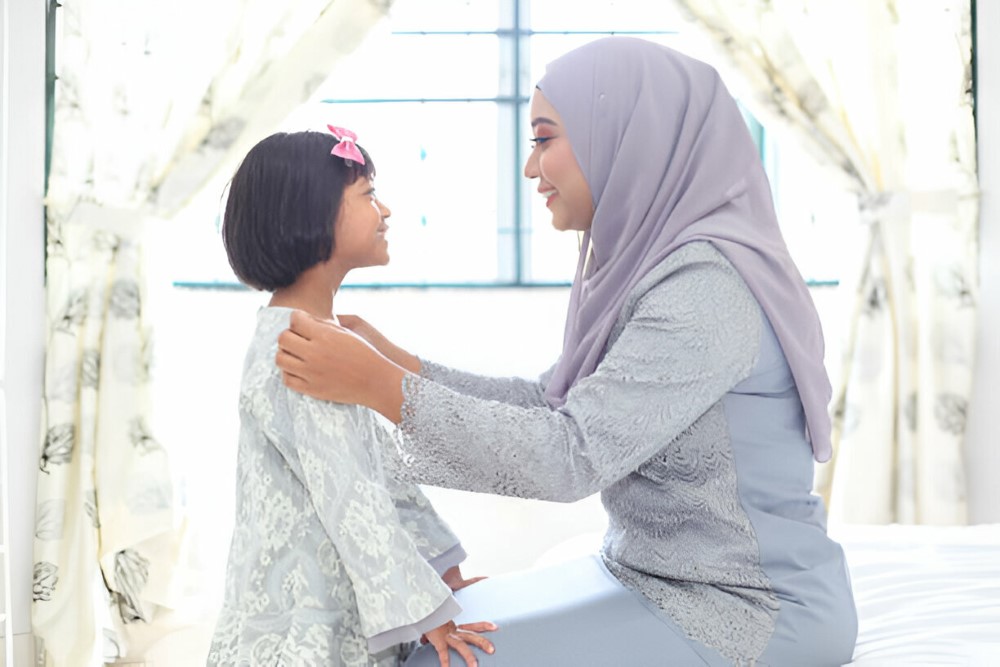As festivals hold deep spiritual and cultural importance, they serve as moments of unity, reflection, and gratitude around the world. In addition to the religious observances, festivities, and communal gatherings, celebrations are also occasions for dressing in one’s finest attire, reflecting the joy of the occasion.
Recently, the concept of Eid kids’ abayas has emerged as a delightful fusion of tradition and modernity, catering specifically to the younger members of the Muslim community.
The significance of these abayas extends beyond mere fashion; through the act of dressing in these abayas, children are not only adorned in attire befitting the occasion but are also immersed in the stories, values, and traditions associated with Eid celebrations.
Understanding Eid Kids’ Abayas
Eid kids’ abayas are miniature versions of the traditional abayas worn by women. These garments typically feature the same flowing silhouette and modest design as adult abayas but are customized with playful elements such as colorful embroidery, sequins, beads, and ribbons to appeal to children’s tastes.
While traditional abayas for children were often simple, contemporary designs by modern brands like Podur embrace creativity and individuality, offering a wide range of styles and options to suit diverse preferences.

Moreover, the cultural significance of kids’ abayas lies in their role as symbols of identity and belonging within the Muslim community. By dressing their children in abayas for Eid celebrations, parents instill a sense of pride in their cultural heritage and religious traditions, fostering a connection to their roots from a young age.
Importance of Modesty During Eid Celebrations
Modesty and traditional attire hold paramount importance during Eid celebrations, reflecting the reverence and solemnity of the occasion. The wearing of abayas, both for women and young girls, symbolizes humility, piety, and respect for religious customs.
Additionally, traditional attire serves as a visual representation of cultural values and societal norms, reinforcing the importance of modesty and dignity in Islamic culture.
In essence, Eid kids’ abayas play a dual role as expressions of cultural identity and symbols of religious observance, imparting valuable lessons to children about the significance of modesty, tradition, and spirituality during Eid festivities.
Role of Eid Kids’ Abayas in Religious Education
Eid kids’ abayas play a significant role as educational tools, offering children a tangible connection to the cultural and religious significance of Eid festivals.
A. Sensory Experience
Through the act of wearing these abayas, children are immersed in a sensory experience that stimulates their understanding of Islamic traditions and values.
The attire becomes a vehicle for storytelling, as parents and elders impart knowledge about the history, rituals, and spiritual significance of Eid celebrations.

B. Visual Representations
The design elements of Eid abayas are infused with cultural and religious symbolism, serving as visual representations of Islamic values and beliefs.
Embroidered motifs, intricate patterns, and embellishments are often inspired by Islamic art and architecture, reflecting themes of unity, spirituality, and reverence.
By incorporating these symbolic elements into the design of Eid abayas, children are exposed to the rich cultural heritage of Islam and encouraged to appreciate its aesthetic and spiritual dimensions.
C. Experiential Learning
Children learn about Islamic festivals not only through formal education but also through experiential learning embedded in everyday practices such as dressing for Eid celebrations.
The process of selecting, wearing, and discussing Eid abayas fosters a holistic understanding of Eid al-Fitr and Eid al-Adha, encompassing religious rituals, cultural traditions, and familial customs.
As children engage with their attire, they are encouraged to ask questions, share stories, and participate in activities that deepen their connection to the festivals and their significance within Islamic culture.
D. Cultural Awareness and Identity
Wearing Eid abayas serves as a powerful means of fostering a sense of cultural pride and identity among children. The attire connects children to their cultural heritage and religious identity, instilling a sense of belonging within the Muslim community.
As children don their abayas for Eid celebrations, they are imbued with a sense of significance and reverence for their cultural traditions.
The act of dressing in attire that is steeped in history and symbolism reinforces a positive self-image and strengthens their connection to their cultural roots.

E. Exposure to Various Designs
Exposure to different styles and designs of Eid abayas promotes cultural diversity and understanding within Muslim communities.
As children encounter a variety of abaya designs from different regions and cultural backgrounds, they gain insight into the rich tapestry of Islamic fashion and aesthetics. This exposure encourages appreciation for cultural diversity and fosters a spirit of inclusivity within the Muslim community.
By embracing the unique styles and traditions reflected in Eid abayas, children develop a broader understanding of their cultural heritage and recognize the beauty in the diversity of Islamic expression.
Final Thoughts
In a world that is increasingly interconnected, celebrating diversity and cultural traditions through fashion becomes more important than ever. Eid kids’ abayas stand as a testament to the beauty of cultural expression and the richness of Islamic heritage.
As children embrace their cultural identity through their attire, they not only celebrate their own heritage but also gain religious education. By embracing diversity and honoring cultural traditions through fashion, we pave the way for a more inclusive and harmonious society.



